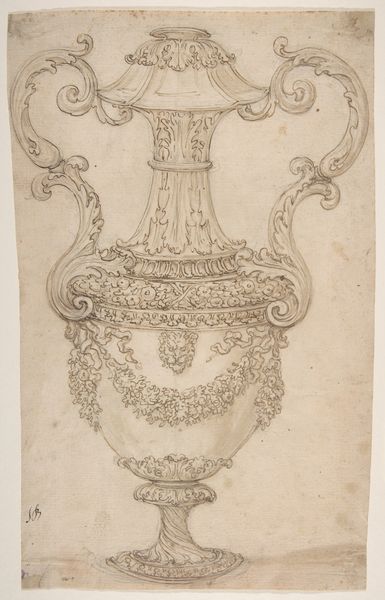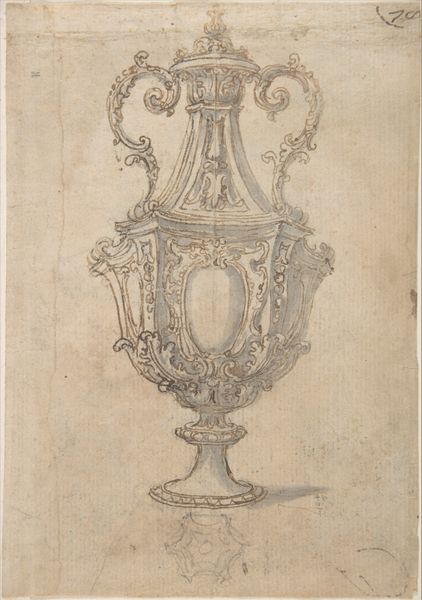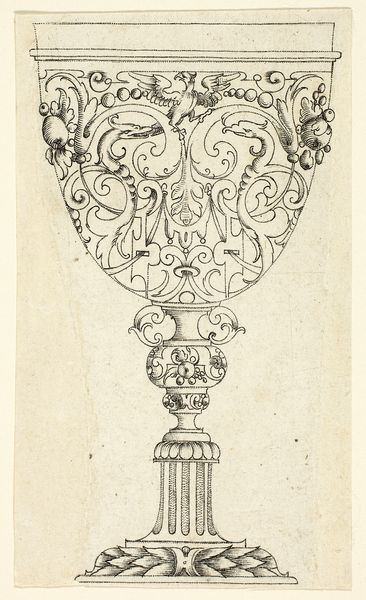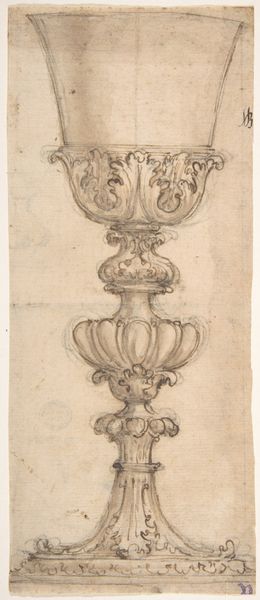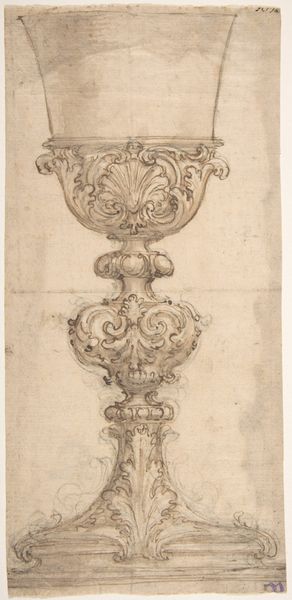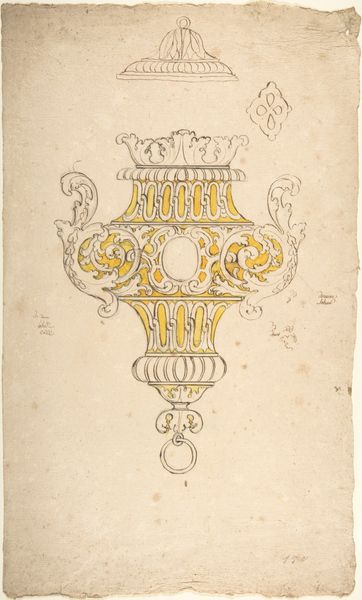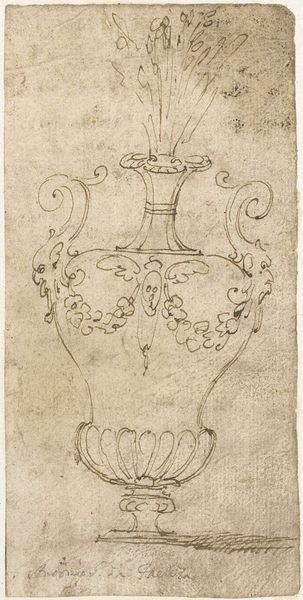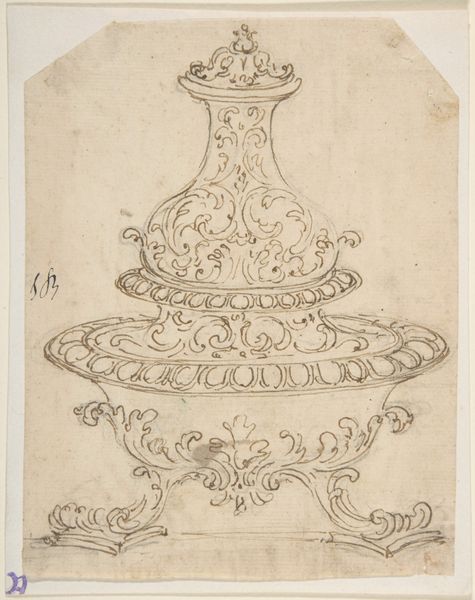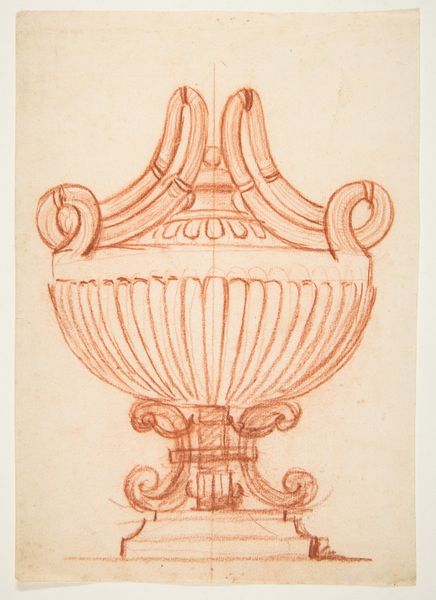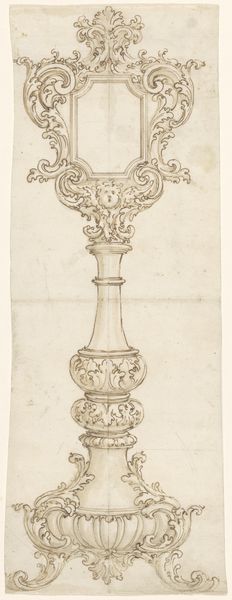
Design for a Two-Handled Urn with Acanthus, Shell, and Egg-and-Tongue Motif. 1652 - 1725
0:00
0:00
drawing, pencil
#
drawing
#
baroque
#
geometric
#
pencil
Dimensions: sheet: 13 9/16 x 9 1/2 in. (34.4 x 24.1 cm)
Copyright: Public Domain
Giovanni Battista Foggini designed this two-handled urn with pen and brown ink in the late 17th to early 18th century. The acanthus leaves, shells, and egg-and-tongue motifs adorning the urn are not mere decorations. They are symbols deeply embedded in the classical tradition. Acanthus leaves, for instance, evoke the lushness and vitality of nature, often seen in Greek and Roman architecture, symbolizing enduring life. The shell, frequently associated with Venus, embodies love and beauty, while the egg-and-tongue pattern—alternating ovals and dart-like shapes—suggests the origins of life, yet also the pain of mortality. Observe how these motifs resurface throughout history, echoing in Renaissance paintings and Baroque sculptures. The echo of antiquity is always resonating. They engage us on a subconscious level, tapping into collective memories and primal emotions. This cyclical progression—from ancient origins to contemporary interpretations—reveals the enduring power of symbols. They reappear, evolve, and take on new meanings, endlessly weaving through the tapestry of cultural memory.
Comments
No comments
Be the first to comment and join the conversation on the ultimate creative platform.
